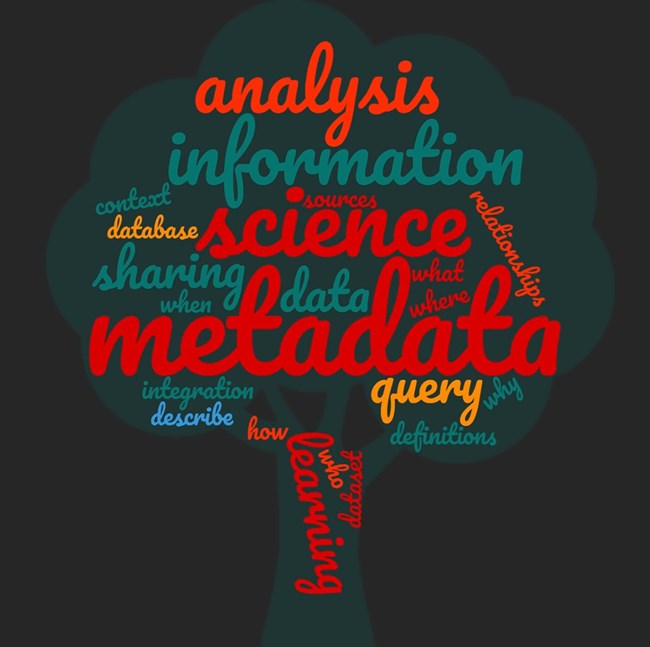Last updated: January 31, 2018
Article
What in the World is Metadata and Why Should I Care?

Image by Sarah Wakamiya and wordclouds.com.
By Sarah Wakamiya, Inventory & Monitoring Program Data Manager
Oftentimes as scientists, we get caught up in the routine of data collection and fieldwork planning. There are grants to write, people to hire, frogs to survey! But in the end, the most important part of our scientific work is the data. The information collected in the field can tell us if ecosystems are changing, populations are declining, or if management actions are working. However, in order for that data to tell meaningful stories and to continue doing so in the future, it must be properly documented. Think of those legacy datasets sitting on shelves (or hopefully servers)—can they be used without knowing when the data was collected or what the data means?
That’s where metadata comes in! Metadata is data about data. It describes information like who collected it, when, for what purpose, and the level of quality. Having this information helps prevent future scientists and managers from misinterpreting results and allows them to analyze data properly. You can think of metadata as little messengers to the future. In order for data to outlast ourselves and be useful over multiple generations, field definitions, method descriptions, and quality markers must be defined.
The Inventory and Monitoring Division (IMD) takes metadata seriously as it manages long-term datasets. Recently, a metadata workgroup was formed by IMD to develop metadata standards and to define a means for facilitating the efficient creation of metadata. For more information on metadata, the IMD metadata workgroup, and help on metadata creation please visit the following sites:
- On the importance of metadata – blog describing what metadata is in plain English
- USGS Metadata page – tutorial on how to create metadata
- I&M Metadata Workgroup Brief (NPS Only)– defines the scope and goals of the IMD metadata workgroup
